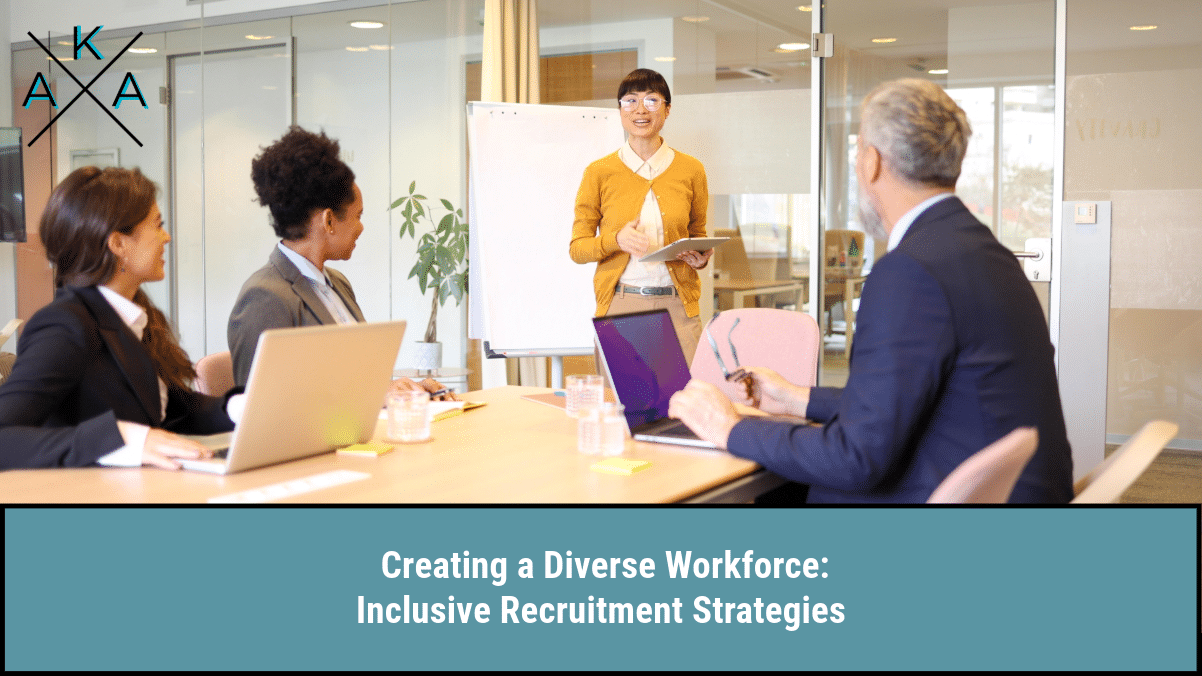Building a diverse workforce is essential for any company that wants to thrive in today’s global economy. A diverse team brings different perspectives, ideas, and solutions, making the workplace more innovative and effective. But achieving diversity requires more than just good intentions; it requires a thoughtful and inclusive recruitment process. This blog will explore strategies for inclusive recruitment, providing actionable steps for companies to build a diverse workforce.
Understanding the Importance of Diversity
Diversity in the workplace means having a mix of people from different backgrounds, including different races, genders, ages, religions, abilities, and more. It is important because it helps companies understand and meet the needs of their diverse customer base. A diverse workforce can also lead to better decision-making, as employees bring various viewpoints and experiences to the table.
Additionally, diversity in the workplace can improve employee satisfaction and retention. When employees feel valued and included, they are more likely to stay with the company and perform at their best. Companies that prioritize diversity also tend to have a better reputation, which can attract top talent and loyal customers.
- Perspectives: Diverse teams bring varied perspectives and ideas.
- Retention: Inclusion improves employee satisfaction and retention.
Creating Inclusive Job Descriptions
The first step in inclusive recruitment is to create job descriptions that appeal to a wide range of candidates. This means avoiding language that might discourage certain groups from applying. For example, terms like “rockstar” or “ninja” can be off-putting to some candidates. Instead, use clear and inclusive language that focuses on the skills and qualifications needed for the job.
In addition to inclusive language, it’s important to highlight the company’s commitment to diversity in the job description. This can include a statement about the company’s values and its commitment to creating an inclusive work environment. Providing information about flexible working arrangements and benefits that support work-life balance can also attract a more diverse pool of candidates.
- Language: Use clear and inclusive language in job descriptions.
- Values: Highlight the company’s commitment to diversity.
Expanding Recruitment Channels
To reach a diverse group of candidates, it’s important to expand recruitment channels beyond the traditional methods. This includes using social media, job boards that focus on diversity, and partnerships with organizations that support underrepresented groups. Attending job fairs and networking events that focus on diversity can also help connect with a broader range of candidates.
Another effective strategy is to encourage employee referrals from diverse employees. Employees who feel valued and included are more likely to recommend the company to their friends and networks. Offering incentives for successful referrals can further motivate employees to participate in the recruitment process.
- Channels: Use diverse job boards and social media.
- Referrals: Encourage and incentivize employee referrals.
Implementing Bias-Free Recruitment Processes
Bias in the recruitment process can hinder efforts to build a diverse workforce. Implementing bias-free recruitment processes involves several steps. One effective method is to use blind recruitment techniques, where personal information such as names and photos are removed from resumes. This helps ensure candidates are evaluated based on their skills and qualifications rather than unconscious biases.
Training hiring managers and recruiters on unconscious bias is also crucial. This training can help them recognize and mitigate their biases during the recruitment process. Additionally, using standardized interview questions and evaluation criteria can help create a more objective and fair assessment of all candidates.
- Blind: Use blind recruitment techniques to reduce bias.
- Training: Provide unconscious bias training for hiring managers.
Building an Inclusive Culture
Building a diverse workforce is not just about recruitment; it’s also about creating an inclusive culture where all employees feel valued and supported. This starts with leadership setting the tone and demonstrating a commitment to diversity and inclusion. Leaders should actively promote inclusive practices and policies, such as flexible working arrangements and support for employee resource groups.
Regularly reviewing and updating company policies to ensure they are inclusive and equitable is also important. This includes policies related to hiring, promotion, compensation, and employee development. Providing ongoing training and development opportunities focused on diversity and inclusion can help reinforce the company’s commitment to creating an inclusive environment.
- Leadership: Leaders should demonstrate a commitment to inclusion.
- Policies: Regularly review and update policies for inclusivity.
Conclusion
In conclusion, building a diverse workforce requires a comprehensive and intentional approach to recruitment and inclusion, benefiting both the company and its employees. By understanding the importance of diversity, creating inclusive job descriptions, expanding recruitment channels, implementing bias-free recruitment processes, and fostering an inclusive culture, companies can attract and retain a diverse range of talent. These strategies lead to better problem-solving, increased creativity, and enhanced company reputation. Building a diverse workforce is an ongoing effort, requiring continuous assessment and refinement of recruitment and inclusion practices. Ultimately, a commitment to diversity and inclusion is not just a moral imperative but a business one, positioning companies to thrive in an increasingly diverse world.
- Check out our “Are You Performing Deep Google Searches for Prospective Hires?” blog for more information on improving your recruitment process.


